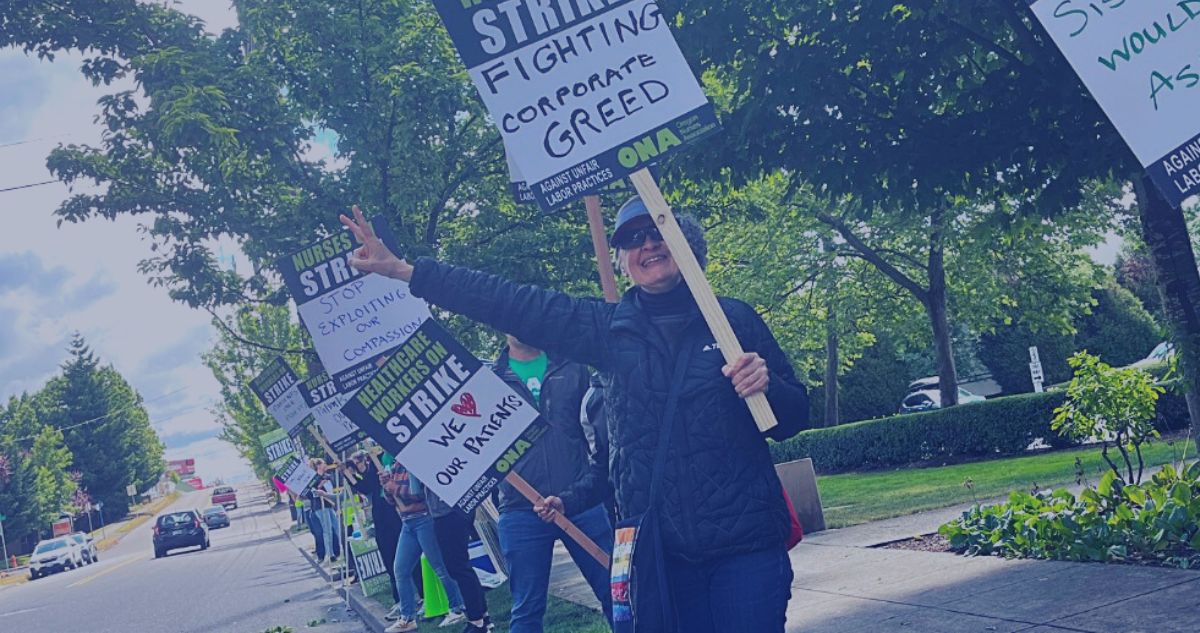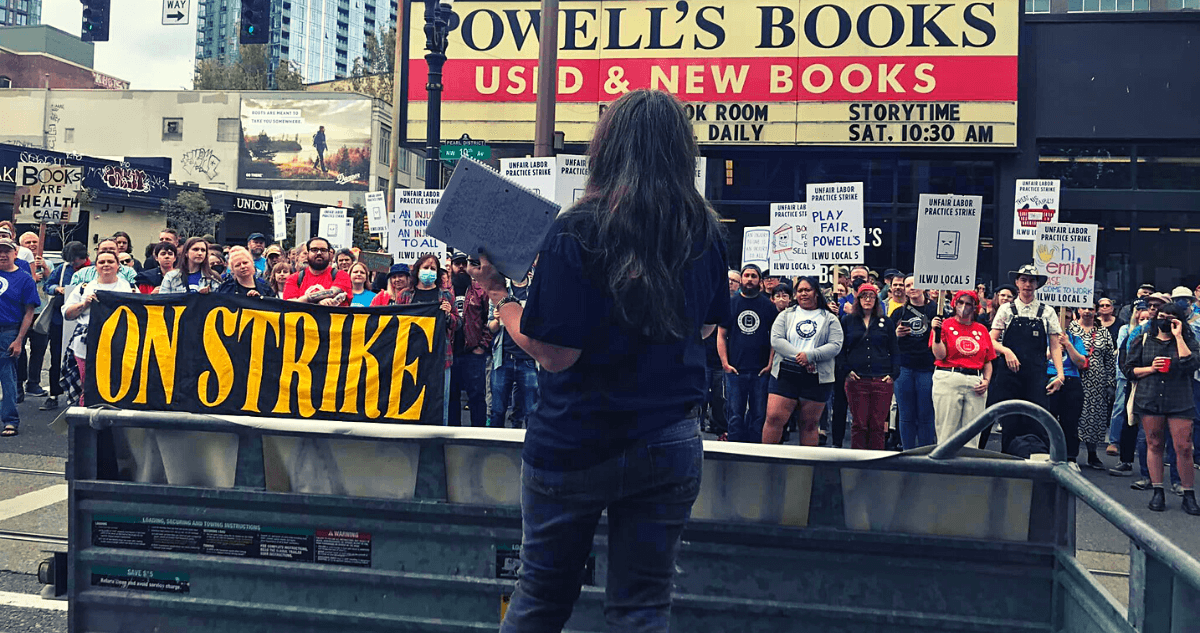Read a pdf of Conserving Energy While Creating Jobs
The 2009 American Recovery and Reinvestment Act (“Recovery Act”), enacted in response to the most severe downturn since the Great Depression, employed a host of strategies to revive economic activity and put people back to work. One of those approaches sought to bolster existing weatherization programs in the states. This fact sheet provides an overview of how the Recovery Act’s weatherization program has helped Oregon families save on energy costs, pumped millions of dollars into the state’s economy and created good jobs.
Weatherization Program Helps Low-Income Families Save on Energy Costs
Oregon’s Weatherization Assistance Program helps low-income families save money by making their homes more energy efficient. Weatherization can take a number of forms, including improved insulation, installation of compact fluorescent lighting, air leak reduction and installation of more energy efficient furnaces or appliances. The program cuts the energy bills of participating households by an estimated $50 to $160 per year, depending on the type of home and heating system.[1] Renters’ homes, as well as owner-occupied homes, can be improved.
The program, dating back to 1979, is a joint state and federal effort. Oregon’s weatherization program receives funding from the U.S. Department of Energy, the U.S. Department of Health and Human Services, the federally administered Bonneville Power Authority and state public purpose funds originating from fees paid by PGE and Pacific Power customers.
The program is administered at the local level. Community-based organizations, usually Community Action Agencies, promote the program among eligible households and assess how participants’ homes can be made more energy efficient. The organizations either perform the weatherization work or hire a local contractor do so. The community-based organizations report to the Oregon Housing and Community Services department (OHCS), which manages and distributes the funds in Oregon.
Recovery Act Dollars Have Helped Oregon Reach More Households
Oregon’s weatherization program historically has had more eligible applicants than it can serve given available resources. Eligible families in Oregon often endure long waiting periods — anywhere from eight months to five years — before their homes are weatherized.[2] Local agencies typically honor a waiting list, with priority given to households with seniors, young children and people with disabilities.
Fortunately, the Recovery Act has bolstered Oregon’s weatherization program in several ways. First, funding for the program expanded significantly. Nationally, the Recovery Act provided $5 billion in grants for weatherization activities to be spent over a three-year timeframe. Of this amount, Oregon has received $38.5 million. This represents more than a 90 percent increase in funds that typically goes to Oregon’s weatherization program.[3]
These funds have benefited thousands families across the state. According to OHCS, as of February 7, 2011, 3,124 more homes were improved as a result of the extra dollars. The table below shows how many more homes Oregon weatherized in each county or service area of the state due to the additional Recovery Act funds. Oregon has until March 31, 2012 to use its entire Recovery Act weatherization allotment.
Recovery Act’s Weatherization Progress in Oregon by Location
|
|
| Location | Homes Weatherized as of Feb. 7, 2011 |
| Multnomah | |
| Jackson | |
| Polk, Marion | |
| Washington | |
| Lincoln, Benton, Linn | |
| Clackamas | |
| Lane | |
| Klamath, Lake | |
| Douglas, Josephine | |
| Hood River, Wasco, Sherman | |
| Deschutes, Jefferson, Crook | |
| Harney, Malhuer | |
| Tillamook, Clatsop, Columbia | |
| Coos, Curry | |
| Gilliam, Wheler, Morrow, Umatilla | |
| Yamhill | |
| Grant, Union, Baker, Wallowa | |
| Klamath, Warm Springs Tribes | |
Additionally, the Recovery Act made it easier for families to qualify for services. Oregon’s program was previously limited to households with incomes at or below 150 percent of the poverty line. The Recovery Act, however, changed the federal eligibility rule to 200 percent of poverty, enabling more Oregon families to qualify. For example, under the new rule a family of four qualifies if their annual income does not exceed $44,700. The old rule excluded households of four making more than $33,525.[4]
Recovery Act’s Weatherization Funds Bolster Economy and Create Good Jobs
The additional weatherization funds have furthered the goal of the Recovery Act: to bolster an economy hammered by the deepest and longest recession since the Great Depression.
The program has injected millions of additional dollars into Oregon’s economy. As of December 31, 2010, the Recovery Act’s weatherization program alone had funneled $19.1 million into the state’s economy.[5] Assuming Oregon spends its entire Recovery Act weatherization allotment by the deadline, over the next year-and-a-half, the weatherization program will put an additional $19.4 million into Oregon’s economy. These numbers represent only the direct dollar impact on Oregon’s economy. They do not include the indirect impact, or “multiplier effect,” on Oregon’s economy — the chain reaction of economic activity generated by the original investment.
The Recovery Act’s weatherization funds have also put people to work. The funds have created jobs in every calendar quarter since April 2009, when the dollars started flowing to the state. Because jobs can vary by number of hours per week and duration, simply counting heads can result in over-reporting in the number of jobs. Accordingly, consistent with federal Recovery Act reporting requirements, OHCS calculates the “full-time equivalent” (FTE) of a job by summing the total hours worked in the state in a calendar quarter and dividing by the number of hours that would need to be worked if someone worked full time during the period. By that measure, in the four quarters of 2010 — a period in which the program was fully up and running — the Recovery Act’s weatherization program in Oregon supported between 95 and 116 jobs in each of those quarters.
By design, the jobs created by Recovery Act dollars are good jobs. They must meet minimum quality standards as set by the federal Davis-Bacon Act. Contractors and subcontractors must earn no less than the local prevailing wages and fringe benefits received for corresponding work on similar projects in the area. These standards ensure that the jobs generated by the new weatherization funds are good for workers and help prevent poverty while at the same time helping to expand the economy.
Conclusion
In an effort to bolster the recession-battered economy, the Recovery Act channeled money through existing state weatherization programs. Data show that in Oregon, these funds have helped more low-income families save on energy costs, pumped millions of dollars into the state’s economy and created good jobs.
Endnotes
*Andrew Cleland worked as an intern at OCPP in the winter of 2010-11.
[1] H.G. Peach, M. Thompson, and U. Mengelberg, Evaluation of the 2003/2005 Oregon Weatherization Assistance Program. Beaverton, Oregon: H. Gil Peach & Associates, 2008, Monograph 11-2008-1, p. 45.
[2] Gail Kinsey Hill, “Wait Long for Help in Home Insulation,” The Oregonian, October 14, 2005.
[3] Calculation based on data supplied by Oregon Housing and Community Services for funding received by the weatherization program from all sources from April 1, 2007 to March 31, 2010.
[4] Department of Energy, Weatherization Notice 09-1B, “Grant Guidance to Administer the American Recovery and Reinvestment Act 2009 Funding,” March 12, 2009. Income eligibility figures for a family of four reflect 2011 federal poverty levels.
[5] Source: Oregon Housing and Community Services.








